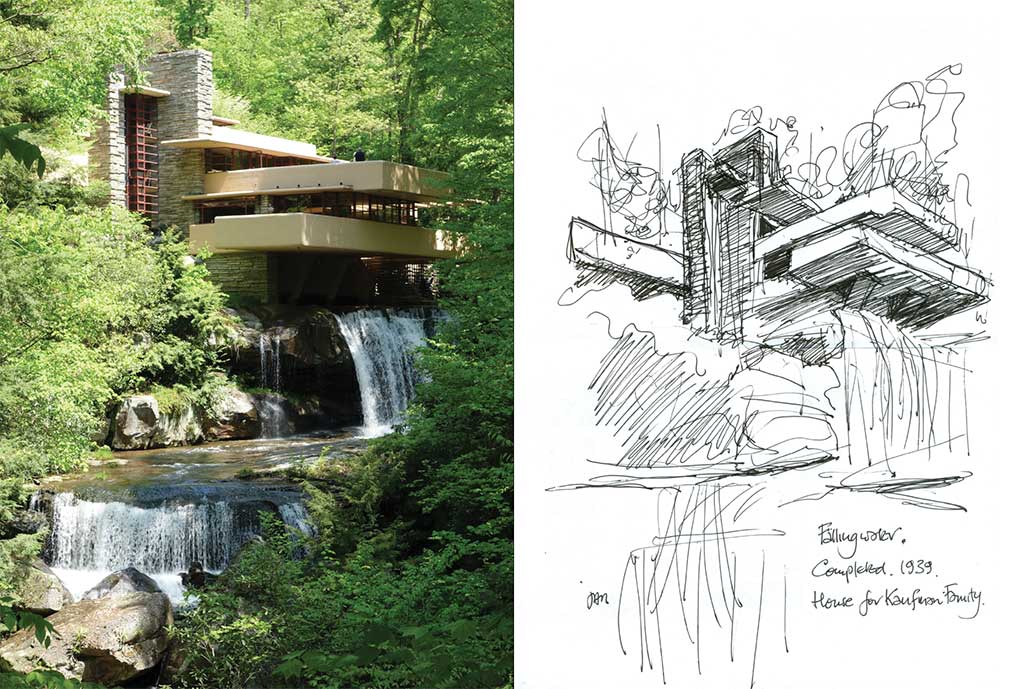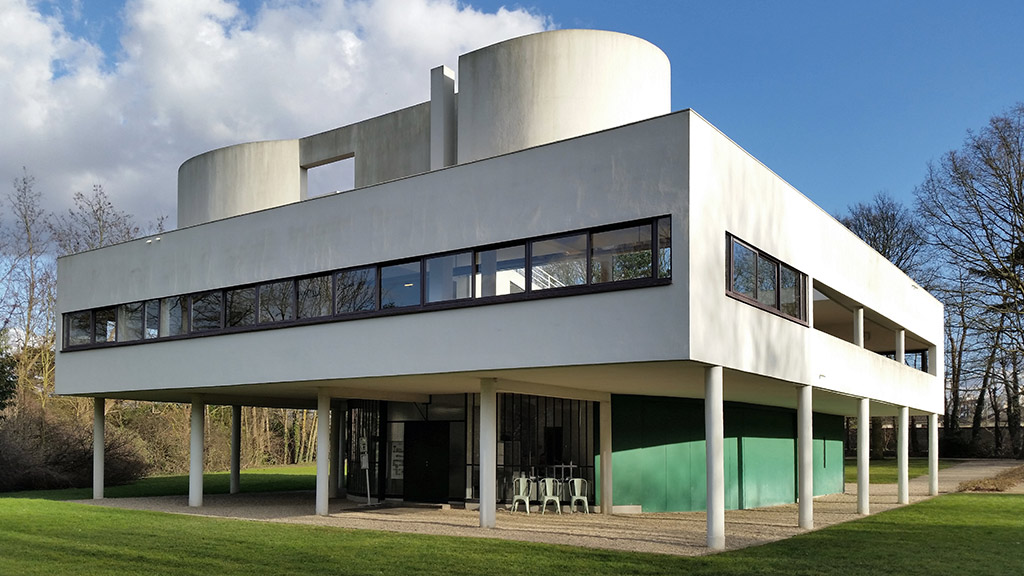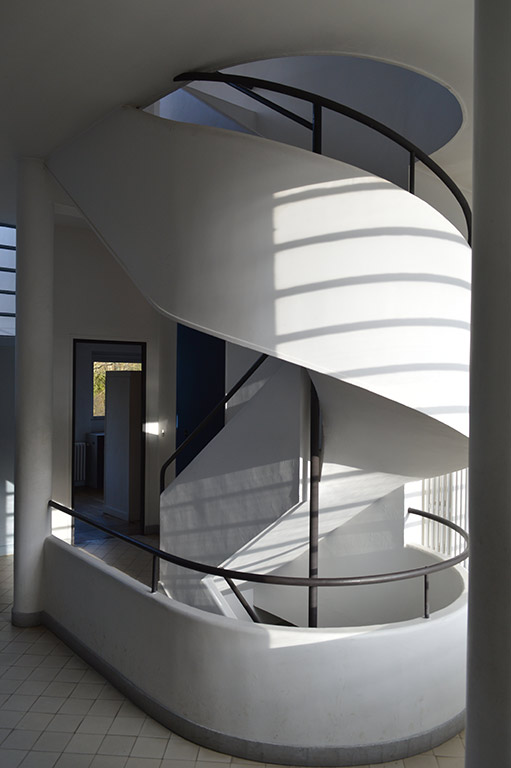The Inside Story
In art and architecture, the myth becomes an antidote to oblivion, giving misplaced importance to private creation where – besides the building or the canvas – the artist or architect too becomes a figure worthy of worship
Gautam Bhatia
The most celebrated building of the 20th century, Le Corbusier’s Villa Savoye stands remote and isolated in the French countryside at Poissy outside Paris. Its detachment rang especially true at the crucial moment in the early phase of Modernism when it was built. The building’s legendary status grew more so in later years, when in fact it came to define the age itself. Corbusier’s own statement that ‘the house is a machine for living’ suggestive of the assembly line, industry and efficiency only cemented its place in the movement. Its philosophical radicalism aside, the house displayed new components for the future of domestic construction – pilotis, a free facade, open plan, a ramp and ribbon windows. The simplistic collective of spare parts was used in such personal artistic combinations, that it told you absolutely nothing of the secret life of the house, nothing of its internal organisation, the variety and sizes of rooms, their source of light. The plan, in fact, broke away from Classical symmetry, away from the surrounding peasant huts and farming countryside of sloped thatched houses, into a precise square concrete box – a brilliant white in the green vale that surrounded it. All that it revealed was a thin strip of window that ran the entire perimeter of the wall, regardless of whether there was a room behind or a terrace garden – the entire assembly raised on a sparse set of thin pillars. At the upper level, an internal courtyard opened up through full-height floor-to-ceiling windows, which were then enclosed by the surrounding wall. The building’s contradictions were clothed in such prosaic simplicity that it left the resident confronted with constant redefinitions of privacy, solitude, openness, intimacy and exhilaration.

The white square plan lifted cleanly on a set of columns is today the single most famous piece of Modernism, photographed, recorded in books and professional journals, and etched in the mind of every architect who has lived and worked in the 20th century anywhere in the world. The tiny building grew from landmark, to icon, to legend, and, ultimately, to myth – a status that is as much a function of time as the fulfilling of a psychological need in architecture, indeed in all art.
Why does art and architecture draw the professional into a perennial collision with the status of ‘cult’ and give misplaced importance to private creation? What in the nature of artistic work sets it apart to the degree where – besides the building or the canvas – the artist or architect too becomes a figure worthy of worship? No other profession demands such reverence. Nowhere will you find dentists emulating the molar work of a fellow dentist and holding it up as exemplary; no accountant has been placed on a pedestal for innovative figures conceived in a year-end tax audit.
Part of the answer lies in a quest not so much for immortality, as for relevance. Both, the dentist and the accountant know that what they do on a daily basis may not be earth shatteringly unique but only keeps body and soul together and – for a short while – keeps you from death. But the daily routine of art and architecture provides no such assurance, and must be judged by different self-made rules. In the long span of a career, the architect barely constructs a few dozen buildings. And in the larger statistics of the surrounding construction the contribution counts for less than one percent of all work built. Is it a wonder then that the myth becomes an antidote to oblivion? Is it for this reason that artists insist on calling what they do ‘work’, even though every aspect of their exploration and expression is closer to ‘play’? Is it why architects agonise over infinitely irrelevant details, knowing full well that their small construction once built will be lost forever in the messy blight of the city?

In some cases, the myth is even transposed onto the artist. Frank Lloyd Wright once began a lecture with the words, ‘I am not only the greatest architect alive, but I am the greatest architect that will ever live’. If the Chicago auditorium audience clapped a little too loudly, it was not to ironically deride the innate immodesty of the statement, but to actually acclaim his status as an important figure in the profession. Architecture needed Wright; Wright had built such an enormous range of iconic buildings in his own time that the status of myth had to be attributed to the man himself.
Even if his monopoly for attention and sheer arrogance did not detract from the quality of the architecture, over time, the judgement of the building got clouded and overtaken by the force of the personality itself. Belief in the myth of self altered Wright’s personality into a tyrannical artist – petulant, self-absorbed and cantankerous, leaving him feeling alone and isolated on his own pedestal. Edgar Kaufman, for whom Wright built ‘Fallingwater’, never tired of narrating how every time the great architect came to visit, he was instructed to wait at the distant gate post on some ruse, long enough for his furniture to be pulled out of storage and placed in position, so the house and its furnishings would be the exact interior that Wright had designed, however awkward and uncomfortable it was for Kaufman. After Wright’s brief visit the entire setting would be replaced in storage, and the familiar padded chairs and sofas would be returned to the rooms – till of course, the next time. Fallingwater’s mythical quality had as much to do with its architecture as with the aberrant personality of its creator.

For the very same architects continue to dissect, draw, model, photograph and preserve their buildings from a variety of angles, in the hope of a private remembrance of a practice and not so much architectural posterity. The desperation to qualify for a place in theoretical history and in the book of buildings, and not in the buildings themselves, ultimately qualifies books as the favoured instruments of memoir. The architect will eventually die, the building will age, alter, decay and be demolished, but the printed life will carry on, and in some distant future, raise the private storyline to myth and legend.
Share